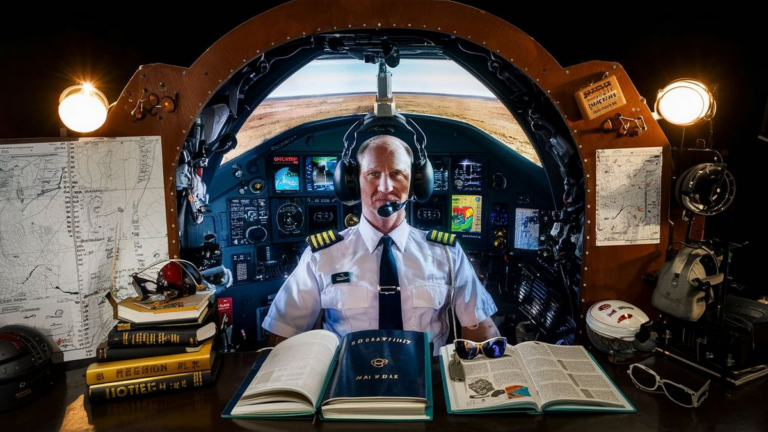If you aspire to soar the skies and command aircraft, becoming a pilot is a thrilling and rewarding journey. From navigating complex airspace to experiencing the freedom of flight, the path to becoming an aircraft pilot is filled with challenges and opportunities. In this comprehensive guide, we’ll walk you through the steps to embark on this exciting career.
Educational Requirements
One of the primary steps towards becoming an aircraft pilot is obtaining the necessary education. While a high school diploma is the minimum requirement, many aspiring pilots pursue higher education in aviation or related fields. A degree in aviation science, aeronautical engineering, or aviation management can provide valuable knowledge and skills that enhance your piloting abilities.
Flight Training
Flight training is the cornerstone of becoming a competent pilot. Aspiring pilots must undergo rigorous training from certified flight instructors and flight schools. Flight training encompasses both ground instruction and hands-on flying experience, covering topics such as aerodynamics, aircraft systems, navigation, and emergency procedures.
Obtain a Pilot’s License
Once you have completed the requisite flight training, the next step is to obtain a pilot’s license. In the United States, the Federal Aviation Administration (FAA) issues various types of pilot licenses, including Private Pilot, Commercial Pilot, and Airline Transport Pilot (ATP) licenses. Each license has specific requirements and privileges, depending on the level of skill and experience.
Build Flight Experience
After obtaining your pilot’s license, gaining flight experience is essential for advancing your career. Pilots often start by working as flight instructors, charter pilots, or aerial surveyors to accumulate flight hours and hone their skills. Building a solid foundation of experience is crucial for pursuing career opportunities with airlines or corporate aviation.
Specialize and Advance
As you gain experience, you may choose to specialize in specific types of aircraft or aviation sectors. Some pilots pursue advanced ratings, such as instrument or multi-engine ratings, to expand their capabilities and career opportunities. Additionally, obtaining additional certifications, such as becoming a Certified Flight Instructor (CFI) or Type Rating Examiner (TRE), can further enhance your professional credentials.
Network and Stay Current
Networking within the aviation community is vital for career advancement. Building relationships with fellow pilots, industry professionals, and potential employers can lead to valuable opportunities and mentorship. Additionally, staying current with industry trends, technological advancements, and regulatory changes is essential for maintaining safety and professionalism in your flying career.
Continuing Education
Aviation is an ever-evolving field, and continuous learning is key to staying competitive as a pilot. Pursuing advanced training courses, attending aviation seminars, and staying updated with aviation publications can help you stay abreast of industry developments and enhance your knowledge and skills.
Becoming an aircraft pilot is a challenging yet fulfilling journey that requires dedication, perseverance, and a passion for aviation. By following these steps and continuously striving for excellence, you can embark on a rewarding career as a pilot and experience the thrill of flight firsthand.
Frequently Asked Questions
Exploring the intricacies of becoming a pilot often brings up various questions. Here are some frequently asked questions:
| Question | Answer |
|---|---|
| What are the medical requirements to become a pilot? | Medical fitness is essential for pilots. Applicants must undergo medical examinations conducted by authorized aviation medical examiners to ensure they meet the physical and mental health standards set by aviation authorities. |
| Is there an age limit for becoming a pilot? | The age requirements for becoming a pilot vary depending on the type of license and jurisdiction. In many cases, individuals can start flight training at a young age, but there are age restrictions for certain licenses, such as the Airline Transport Pilot License. |
| What is the typical career path for a commercial pilot? | Commercial pilots often start by obtaining a Private Pilot License, then gain experience as flight instructors or charter pilots. With sufficient flight hours, they can advance to positions with regional airlines and eventually major airlines. |
| Are there financial assistance programs available for pilot training? | Yes, there are various financial assistance programs, scholarships, and loans available to help aspiring pilots finance their training. Many flight schools, aviation organizations, and government agencies offer financial aid opportunities. |
| What are the career prospects for pilots? | The demand for pilots fluctuates with economic conditions and industry trends. However, the aviation industry generally offers promising career prospects for qualified pilots, especially as global air travel continues to grow. |
Additional Training and Certifications
Aside from the essential flight training and obtaining pilot licenses, there are additional training and certifications that pilots can pursue to enhance their skills and marketability:
- Flight Instructor Rating: Becoming a certified flight instructor allows pilots to teach and train aspiring aviators, further solidifying their understanding of aviation principles.
- Advanced Aircraft Type Ratings: Pilots can undergo specialized training to obtain type ratings for specific aircraft models, enabling them to operate complex aircraft.
- Emergency Procedures Training: Courses focused on handling emergency situations, such as engine failures or in-flight emergencies, provide valuable skills for ensuring passenger safety.
See also:






